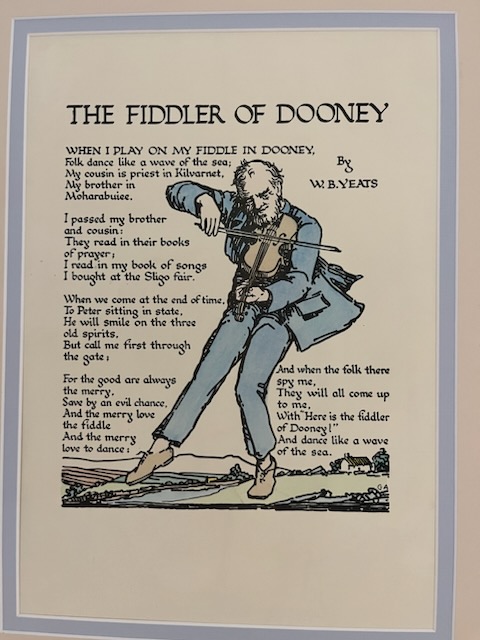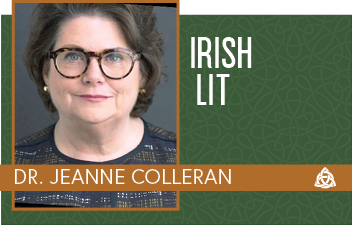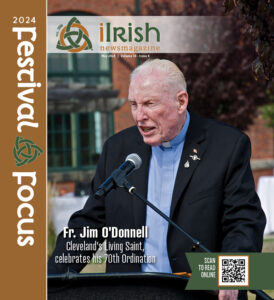

By Dr. Jeanne Colleran
American Arts and Crafts
Most of us can recognize the names and styles of the American Arts and Crafts artists: we know the mission style of Gustauv Stickley’s furniture, with its clean, straight lines, simple but elegant craftsmanship, and the best of natural woods. Stickley’s aesthetic and philosophical credo was “to the best if my ability” make craft furniture that was simple and honest in its construction and truthful to its medium.
Another example of arts and crafts design in the United States is the glasswork of Louis Comfort Tiffany. Like Stickley, Tiffany was leery of mass-produced furniture or art, as he believed that the artist should be involved from design to fabrication. Like Stickley, whose chairs and tables were often made of such heavy woods that they required a design that preserved the beauty of the wood but in a design structure that was at one with the material.
We might point to the work of Louis Comfort Tiffany, categorizing his stained-glass windows, lamps, and other decorative objects as “Art Nouveau.” Tiffany’s work is connected to the Arts and Crafts Movement by its own embrace of truthfulness to the medium.
He patented a new kind of glass production which produced opalescent glass. Able to offer a wider range of shades; it stood in contrast to glass that is painted on. Moreover, Tiffany believed the artist himself needed to be personally involved from the initial design to the fabrication.
Tiffany looked to nature for inspiration, but he always reminded onlookers of the primacy of craft. He called some of his glassworks “Favrile” or hand made. The Stickley and Tiffany’s approach to materials, as well as the shared emphasis on individual craftsmanship, has endured in American architecture, glass, rugs, ceramics, and other items.
British Arts and Crafts
The Arts and Crafts Movement originated in Great Britain. where the art critic John Ruskin, concerned about the effects of industrialization, advocated a return to a Gothic or medieval sensibility, which favored a high level of craftsmanship. Ruskin’s views were adopted by one of his students, William Morris.
“Have nothing in your houses that you do not know to be useful or believe to be beautiful” is Morris’ famous dictum. He owned a shop in London, Morris and Company, which displayed his rugs, wallpaper, and fabrics. Many of these can now be seen in the Morris Collection in the Victoria and Albert Museum in London.
Morris also ventured into designing books, creating the typeface, the illustrations, and the decorative borders for books, including his own writings and poems. One of his books, News from the World, shows off his decorative style as he contemplates a future utopia. It can be purchased at the V&A: https://www.vam.ac.uk/shop/books/all-books/news-from-nowhere-148503.html
Irish Arts and Crafts
William Morris was friends with the Yeats’ family, sharing their commitment to art and political causes. Yeats had one brother, Jack, a painter, and two sisters, Elizabeth (Lolly) and Susan (Lily). While Yeats’ political views grew more conservative as he aged, he participated in the Irish Literary Revival, which like the Arts and Craft Movement, saw art—especially painting and decorative arts—as part of the new social dispensation.
Susan spent time learning embroidery and working with May Morris until 1896. Later, the two sisters became part of Dun Emer, a craft house that they shared with Evelyn Gleeson. Eventually, the group split, and the Yeats sister established the Cuala Press and focused on hand-printed editions of important new Irish work.
Their contribution to cultural nationalism can’t be minimized: they printed works by John Millington Synge, Lady Augusta Gregory, Ezra Pound, Oliver St. John Gogarty, Louis MacNeice, Patrick Kavanagh, and Elizabeth Bowen. They printed handsome editions of their brother’s new poetry collections.
Much has been written about the different temperaments of the Yeats’ family: William’s interest in psychics and automatic writing, Lolly’s hot temper and reliance on tarot cards, Lily’s frequent poor health, Jack’s friendship with Samuel Beckett. They were creative, lively, at times quarrelsome.
Less has been written about the Cuala Presses’ contribution to the emerging role of women in Irish society. In Ulysses, Joyce mocks the Yeats sisters by calling them, “the weird sisters,” the “two designing women” who operated the “Druiddrum press.”
In fact, the Cuala Press was a landmark endeavor: a gendered publishing enterprise: one run by a woman, employing only women, and designed to create work and economic independence for Irish working girls” (Simone Murray 489). The best account I could find is Simone Murray’s The Cuala Press: Women, Publishing, and the Conflicted Genealogies of Feminist Publishing,” Women’s Studies International Forum 27 (2004) 489 – 506.
It is still possible to see the Cuala prints online as part of the Cuala Press project of Trinity College, Dublin. [Above] is one of my favorites, from Yeats 1899 poem, “The Song of the Wandering Yeats.” You can also purchase, as I have, Cuala Press prints that are hand colored. They vary in price from $150 to $750, and are sold on Etsy, Ebay, and by independent curators.
Find this column and other Dr, Colleran Irish Lit Columns HERE!




*Dr. Jeanne Colleran, Ph.D is Professor Emeritus of English. At John Carroll University she served as Dean of the College of Arts and Sciences and as the Provost and Academic Vice President. At Loyola University of Chicago, she worked with the Loyola Rule of Law Institute in the School of Law.
A scholar of modern and contemporary literature, she has published a book, an edited collection, and some three dozen articles concerning literature and society. She has lectured in Ireland, South Africa, England, United States, France, Canada, Belgium, and The Netherlands. She taught undergraduate and graduate courses in Irish Literature. She may be reached at [email protected]
ends


Monthly newsmagazine serving people of Irish descent from Cleveland to Clearwater. We cover the movers, shakers & music makers each and every month.
Since our 2006 inception, iIrish has donated more than $376,000 to local and national charities.
GET UPDATES ON THE SERIOUS & THE SHENANIGANS!